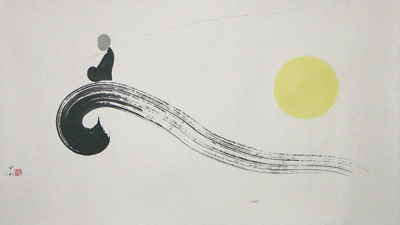What was the beginning of Rabbi Akiva?
They say that he was forty years old,
and had not learned anything.
Once, he was standing at the opening of a well.
He said, “Who carved this rock?”.
They said to him,
“It’s the water that constantly falls on it every day.”
They said to Akiva,
“Haven’t you ever read the verse, ‘Water carves stones’ (Job 14:19)?”
Immediately Rabbi Akiva compared this to himself:
“Just as the soft can carve the hard,
words of Torah that are hard like iron –
how much the more so that they can carve my heart,
which is flesh and blood?” (Avot D’Rabbi Natan, Chapter 6)
In a recent Mishkan staff learning, Rachel Cort taught us the theory of fixed mindset vs. growth mindset from Stanford psychologist Carol Dweck. Here’s the gist: Some of us operate with a mindset that our talents and level of intelligence are fixed. We believe that these attributes are innate to who we are and unchanging, which means that either we’re good at certain things or not, and failure and frustration are signs that we’re bumping up against our inherent limitations.
But others operate with a growth mindset. This is the idea that success comes from hard work and training, and we as human beings are capable of change and growth through perseverance and effort. According to the growth mindset, failure isn’t a referendum on our basic abilities, but rather a source of learning. Dweck writes:
“In a fixed mindset students believe their basic abilities, their intelligence, their talents, are just fixed traits. They have a certain amount and that’s that, and then their goal becomes to look smart all the time and never look dumb. In a growth mindset students understand that their talents and abilities can be developed through effort, good teaching and persistence. They don’t necessarily think everyone’s the same or anyone can be Einstein, but they believe everyone can get smarter if they work at it.” (“Stanford University’s Carol Dweck on the Growth Mindset and Education”. OneDublin.org. 2012-06-19.)
I find this mindset-shift essential for going through the process of teshuvah, of turning and returning to the person that I want to become in the coming new year, and I think it’s the same mindset that Rabbi Akiva held when he approached the prospect of new learning.
We can think we’re like rocks. Hardened, unchanging, fixed beings. We know our edges pretty well, where we keep bumping up against the same corners and tumbling down the same cliffs again and again. It’s painful, being a rock, because if you want to change quickly, the only way to do it is to get smashed, or to smash something else.
But Rabbi Akiva saw something else when he looked at that carved rock. It reminded him of his own heart, unable or unwilling to learn before age 40. He thought he was fixed, forever. But by seeing how water was able to wear down and smooth out the rock over time, he realized – it’s not that way! My heart is flesh and blood. I can change, I can learn, I can grow – and I can let the world and the Torah’s wisdom shape me.
We have the possibility of being like Rabbi Akiva every single year approaching the High Holidays, realizing “Wow – I’m 40 years old (or 20, or 60, or 80), and I don’t know anything! I still have no idea who I am, why I’m here, what my purpose is.”
And rather than that being evidence of some kind of moral failure, it’s exactly the point we need to be at in order to grow. The Zen Buddhists call it “beginner’s mind,” the idea that the mind of a beginning is more plastic, malleable, and able to see new possibility, much more so than the expert. We don’t have to know where we’re going, or who we want to become. So if we want to start growing into that future, the process of teshuvah begins with the realization that transformation is always happening, and we are far more vulnerable to the world than we may have previously thought.

